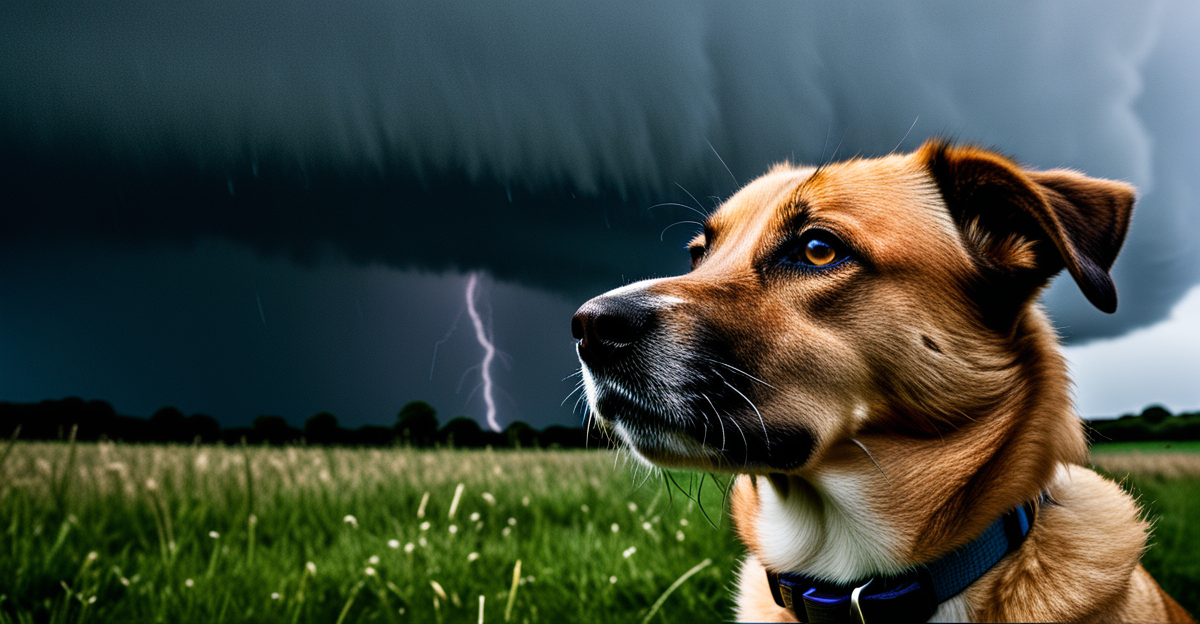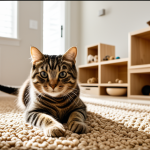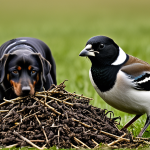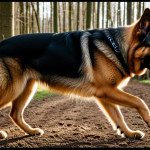Understanding Thunderstorm Anxiety in Pets
Thunderstorms can be distressing for pets, leading to significant anxiety. Pet anxiety manifests in various ways during thunderstorms. Many pets display symptoms such as panting, shaking, or hiding when a storm approaches. More extreme reactions might include excessive barking or attempted escapes.
Common Signs of Pet Anxiety
Pet owners in the UK often witness specific behaviours when dealing with thunderstorms. Indicators of pet anxiety include changes in posture, such as crouching or cowering. Some animals may try to seek refuge in small spaces, while others become clingy, constantly seeking their owner’s comfort.
A lire également : Transform Your UK Home into a Hamster Paradise: Key Tips for Crafting an Enriching Habitat
Specific Behaviours Exhibited During Severe Weather
Under severe weather conditions, UK pet care providers note unique patterns. Dogs, for instance, may excessively lick their paws or display destructive behaviour like chewing furniture. Cats, on the other hand, might become more vocal or entirely withdraw from interaction. Recognizing these signs is crucial for pet owners to address and manage their pets’ anxiety effectively.
By understanding these behaviours, pet owners in the UK can better prepare and implement strategies for comforting their anxious pets during thunderstorms.
Lire également : Ultimate Enrichment Tips to Keep Your Pet Ferrets Happy and Boredom-Free
Creating a Safe Space for Your Pet
Creating a safe space is crucial for pet comfort during storms. This designated area can help alleviate pet anxiety by providing a refuge where they feel secure. When preparing for storm preparedness, it’s essential to choose the right spot. Ideal locations are quiet places away from stress-inducing sounds, like an interior room or basement.
To transform this area into a comforting environment, gather soft bedding, favourite toys, and familiar items smelling of home. These materials provide sensory comfort and a sense of normalcy. Dimming lights or using blackout curtains can also help in minimizing visual stimuli that contribute to anxiety.
Encouraging pets to use this safe space involves training and positive reinforcement. Introduce the area well before thunderstorms are imminent. Offer treats or praise when your pet voluntarily enters the space. Familiarity, paired with comfort, builds trust, making this retreat a go-to haven when anxiety spikes.
For a pet’s sake, consider introducing background noise, such as music or white noise, to drown out the thunder’s racket. By methodically fostering this sanctuary, pet owners can significantly reduce storm-related stress and support calmer behaviour in anxious pets.
Calming Techniques and Products
Pet anxiety relief is crucial during thunderstorms, and there are various calming techniques and products available to help soothe your anxious pet.
Natural Remedies
Natural remedies can be a gentle approach to managing pet anxiety. Essential oils like lavender, when used safely, can create a calming atmosphere. Bach flower remedies offer another holistic option, providing gentle relief through natural extracts.
Calming Products
In the UK, there is a range of calming products to explore. Thundershirts, for example, apply gentle pressure, similar to swaddling, which can comfort anxious pets. Pheromone diffusers mimic natural calming chemicals, promoting a sense of security. Ensuring these products are used according to instructions can enhance their effectiveness.
Behavioral Techniques
Behavioural techniques, such as desensitisation, play a vital role in anxiety management. Gradual exposure to recorded storm sounds, paired with positive reinforcement like treats, can help pets acclimatise to thunderstorm noises. Developing a consistent routine builds familiarity and trust, reducing anxiety over time. Engaging in regular play and exercise also channels energy positively, mitigating stress for your furry companions.
Keeping Up with Local Alerts and Resources
Staying informed with UK weather alerts is essential for pet owners anticipating thunderstorms. By subscribing to local alerts via apps or websites, you can prepare your emergency plans effectively, ensuring your pets’ safety. It’s crucial to act promptly and use this information to protect your furry friends from distressing weather conditions.
In addition to weather updates, knowing accessible pet resources offers peace of mind. Many areas in the UK provide emergency services specifically for pets, including veterinary care and temporary shelters. Familiarising yourself with these options can make a significant difference when a storm approaches.
Planning ahead is fundamental for any unforeseen circumstances. Ensure your emergency plans encompass every aspect of your pets’ needs during storms. This includes having an emergency kit with necessary supplies such as food, medications, and comfort items. Make arrangements with neighbours or friends who can assist or offer shelter if needed.
Being proactive with weather alerts, resources, and thorough planning fosters a secure environment for your pets during thunderstorms. By maintaining readiness, you efficiently manage potential stress and ensure the well-being of your beloved companions.
Post-Storm Care and Recovery
After a thunderstorm, pets may continue to show signs of anxiety. Recognizing this post-storm behaviour is crucial for effective recovery. Pets might exhibit lingering anxiety through restlessness, increased clinginess, or reluctance to return to normal activities. Identifying these signs early can help pet owners address their companions’ needs promptly.
To help pets relax, engage them in calm, reassuring activities. Gentle petting or a soothing massage can comfort pets, promoting relaxation and a sense of security. Additionally, interactive play sessions using their favourite toys can redirect energy positively, easing stress from the storm.
It’s important to provide emotional care by creating a consistent and supportive environment. This might involve maintaining routines that include regular feeding times and exercise, as these familiar actions offer pets comfort and reassurance. Engaging in calming practices like soft music or a quiet story time further fosters a peaceful atmosphere.
Incorporating these practices ensures that pets not only recover but also build resilience against future storms. Reinforcing a stable and nurturing environment makes pets feel safe, gradually reducing anxiety episodes. By doing so, pet owners contribute significantly to their pet’s overall emotional well-being.










